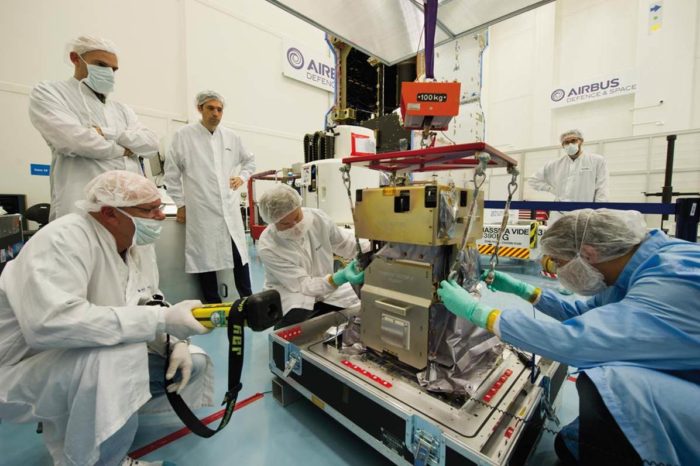In a previous post on the Government Satellite Report, we examined NASA’s GOLD program (Global-scale Observations of the Limb and Disk). GOLD is a particularly notable endeavor because it is both being conducted as a hosted payload and has garnered a large amount of involvement from the University of Central Florida and the University of Colorado’s Laboratory for Atmospheric and Space Physics (LASP).
Benefits of Academic Institutions Pursuing Hosted Payloads
The involvement of academic institutions in a hosted payload program may be unique, but it shouldn’t be particularly surprising. That’s because hosted payloads can deliver multiple significant benefits to any academic institution looking to gather satellite data for use in research and scientific pursuits – especially in such hot research areas as climate science.
Hosted payloads present many of the same advantages for academic institutions that other government agencies using hosted payloads, like the FAA, already experience. The most important of these being the conservation of time, resources and funds. The cost of building a spacecraft and launching it is extremely high. Which is what makes the concept of hosted payloads so appealing for government agencies and academic institutions, alike.
As Todd Gossett, Senior Director of Hosted Payloads at SES Space and Defense explained, “It’s a cheaper way to get into space. And that’s because they [universities] don’t have to procure an entire spacecraft [and]the entire support infrastructure that comes with that, such as the ground commanding infrastructure, antennas, operations center, etc. And they don’t have to procure a launch…really it’s because the unique attributes of a hosted payload program really match up with the funding and the infrastructure of the hosted payload customer.”
Understand the Challenges of Starting a Hosted Payload Program in Academia
That’s not to say there wouldn’t be some sizable challenges to overcome in order to put a hosted payload program in place at an academic institution. Even with the massive cost savings that hosted payloads offer, these projects can still cost millions.
This is the main deterrent that is pushing most academic satellite programs to focus on much smaller satellites like nanosats or cubesats. However, although these satellites offer a valuable learning experience, they simply can’t stay in orbit as long as a hosted payload on a GEO satellite, and they seem to be limited to LEO.
Find a Government Partner with Similar Goals
Of course, government budgets for scientific exploration are far larger than that of an academic institution. So in order to put a hosted payload program into action, the university will likely need to seek out a government sponsor with similar scientific goals. “Seek out a government sponsor who is interested in the science that they could produce as a result of putting a mission into space,” Gossett explained. “That’s going to make it much easier for [universities] to obtain the requisite funding to put a science mission on board a spacecraft.”
Build Hardware that is Space Certified
Beyond funding, there is also the challenge of building payload hardware that is space certified. This is where partnerships with third-party vendors like Boeing, Lockheed Martin, Leidos, Ball Aerospace and some universities like University of Colorado, University of Massachusetts Lowell and University of California Berkeley come into play; they’re capable of building space-qualified hardware that both meet mission requirements and can withstand the harsh environment of space. Satellite vendors such as Boeing, Airbus Defense and Space, and Orbital ATK also provide experienced teams to integrate hosted payloads with the host satellite.
Finally, owner-operators such as SES Space and Defense can operate the host satellite, facilitate operations of the hosted payload, and downlink and disseminate mission data using the company’s existing satellite command and control and ground infrastructures, all invaluable resources to a typically lean academic team.
For universities and other academic institutions to successfully take part in a hosted payloads program, they likely will need to find a government partner with similar scientific goals in mind to sponsor the project, and a third-party vendor to support the hardware and infrastructure needs of that project. Like most academic pursuits, a hosted payload program is a collaborative effort. However, should an academic institution put in the work and build a team – similar to the one behind the NASA GOLD program – the benefits could be well worth their effort.
To learn more about hosted payloads and their benefits, check out SES Space and Defense’s whitepaper entitled, “What is a Hosted Payload” or watch the Hosted Payloads Video here.
